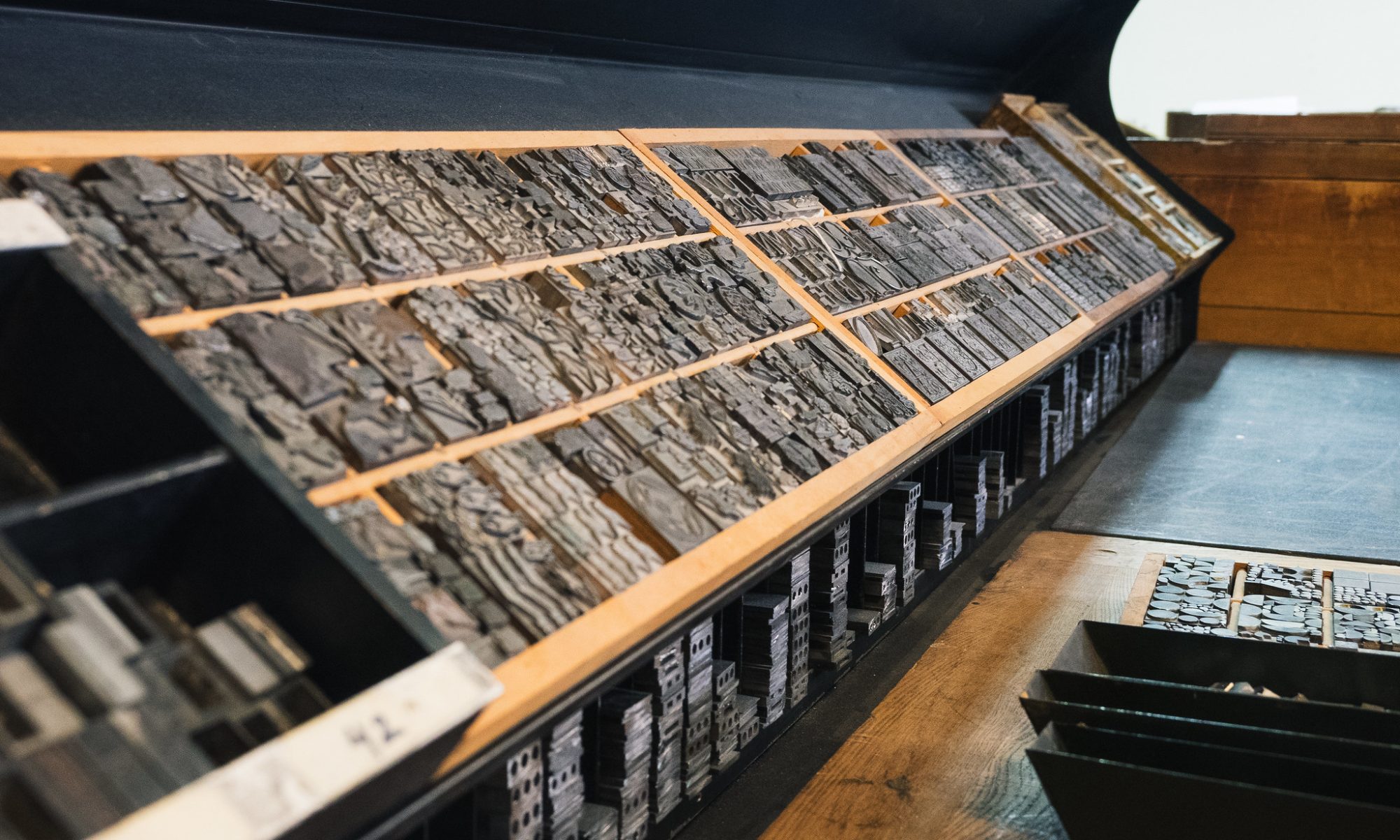The Golding press that sits in our front window has no rollers (and no working brake), and we use it exclusively for scoring, embossing, and debossing: un-inked operations.
Here, we used it to score the folds on a heavy booklet cover. It had a narrow spine defined by two scores, where the paper is indented for ease of crisp and consistent folding.

This means compressing the paper between a blunt steel edge in the bed and a grooved receiving strip adhered to the surface under the paper. The scores were so close together we couldn’t fit two strips of the receiving matrix next to each other. With some very careful math and trimming, we could use one setup for both scoring lines, turning the sheet 180° during the feed to make both sides of the spine fold.
It’s a slow feed, mostly for the fact that when the sheet is fed the second time the bump of the first fold tends to catch on the receiving matrix. But on a careful, short run it’s worth the effort to plan ahead, save time, and avoid making a second setup for another score.
We don’t keep the small, unmotorized presses just because they’re cute! For delicate projects like this, the fine control of speed by treadle operation is an advantage.























You must be logged in to post a comment.